Inspired by nature - creating with flowers
Spring is all about colour. Whether it’s filling pots with flowers that continue from now until next winter or planting something more permanent, getting creative with flowers is one of the great pleasures of the new season.
Botanically speaking there are two kinds of flowering plant; annuals and perennials. Most gardeners combine the two as each has its own part to play in a colourful garden.
Annuals complete their life cycle within a year; from seed to flower and back to seed. They grow quickly from seed to maturity, flowering in continuous mass for many months on end. Annuals offer quick rewards and huge scope for experimentation. Because they are replanted each year, they prompt us to create a new look each year. Low growing flowering annuals are brilliant in pots. Grow your own from seed (ideal if you want lots of the same flower) or buy seedlings from the garden centre for super fast results.
Perennials stay alive for many years, decades or even centuries. Technically, shrubs and trees are perennials. Generally though, the plants that gardeners refer to as perennials are those enduring smaller plants whose roots live on in the soil returning to bloom every year even if the above ground part of the plant disappears over winter. There is delightful anticipation in waiting for favourites to spring into life at this time of year. Because perennials don’t require replanting every year, they are generally less time consuming than annuals, simply requiring a quick cut back each year after flowering. Many grow best when lifted, divided and replanted every few years.
Trees and shrubs provide permanent garden structure. Deciduous magnolias, flowering cherries and dogwood trees are shining stars in spring. Evergreens that put on a floral spectacle every spring include beloved rhododendrons, camellias, evergreen magnolias (aka Michelia) and native kowhai trees.
Deciduous shrubs are the Cinderellas of the garden; shy and unassuming for most of the year but making up for it with their breathtaking floral beauty every spring. The likes of Syringa (lilac), Deutzia, Forsythia, Spiraea, Kolkwitsia (beauty bush), Hamamelis (witch hazel), Chaenomeles (flowering quince), Chimonanthus (winter sweet), and Viburnum are too often overlooked in these days of shrinking gardens. But make space for one of these vintage treasures and you won’t be disappointed.
Bulbs and bulb-like structures produce some of the most eye-catching flowers in the garden; daffodils and tulips for early spring and then the ‘summer flowering bulbs’ such as dahlias, callas, begonias and flag iris. These are available from garden centres in early spring.
For the bees
Bees are attracted to lots of different garden flowers, but they generally have a preference for those that are simple, single and old fashioned. Include flowers especially for the bees and the bees will reward you by pollinating your fruit and vege plants.
FLOWERS FOR BEES
Camellia
Cosmos
Delphinium
Echinacea
Echinops
Foxglove
Fruit tree blossom
Hebe
Helenium
Lavender
Manuka
Penstemon
Poppy
Rosemary
Roses - old fashioned and single
Sunflower
Thyme
Zinnia
Beautiful blues
Cool blues and purples are excellent mixers in the flower garden, contrasting beautifully with hot reds and yellows and adding a sense of depth. Bees love them.
BLUE FLOWERS
Bacopa
Brachycome
Calibrachoa
Campanula (bell flower)
Cornflower
Delphinium
Echium
Geranium (Cranesbill)
Iris
Lavender
Lobelia
Nepeta (Catmint)
Nigella (Love-in-a-mist)
Pansy
petunia
Viola
For picking
Any flower is worth displaying in a vase but those that last well in water and have long straight stems are especially worth planting if you enjoy flowers indoors. Be sure to plant some shrubs with flowers for picking, as well as annuals and perennials.
FLOWERS FOR PICKING
Astrantia
Alstroemeria
Calla (Zantedeschia)
Cornflower
Cosmos
Dahlia
Foxglove
Gerbera
Hydrangea
Lavender
Lily
Nigella (Love-in-a-mist)
Penstemon
Peony
Poppy
Roses
Sweet pea
Zinnia

1-Sep-2019
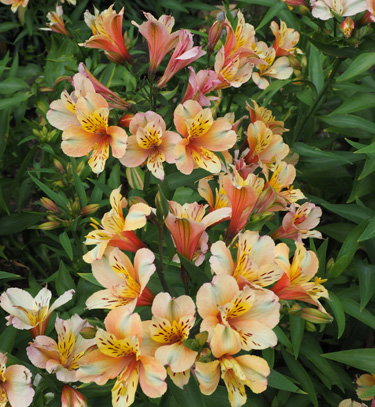
Alstromeria
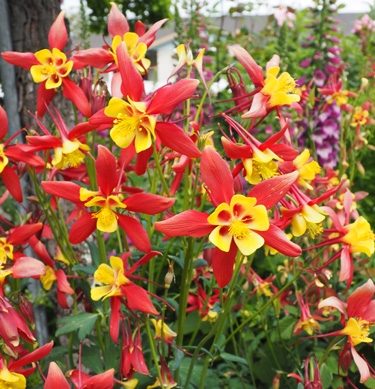
Aquilegia - Granny's Bonnet
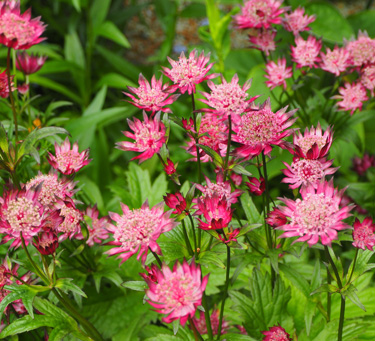
Astrantia
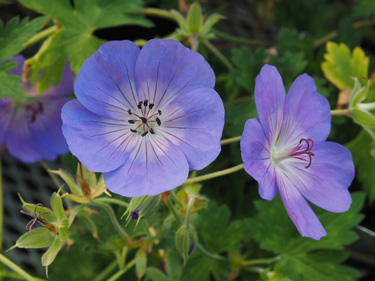
Geranium 'Rosanne'
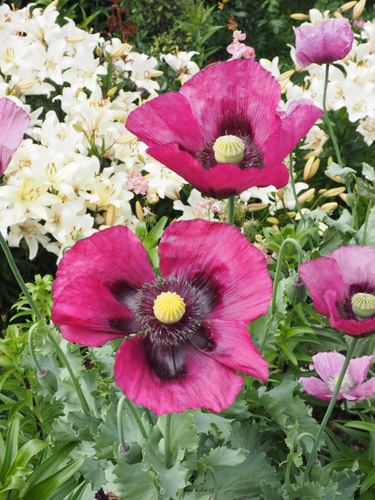
Oriental poppy

